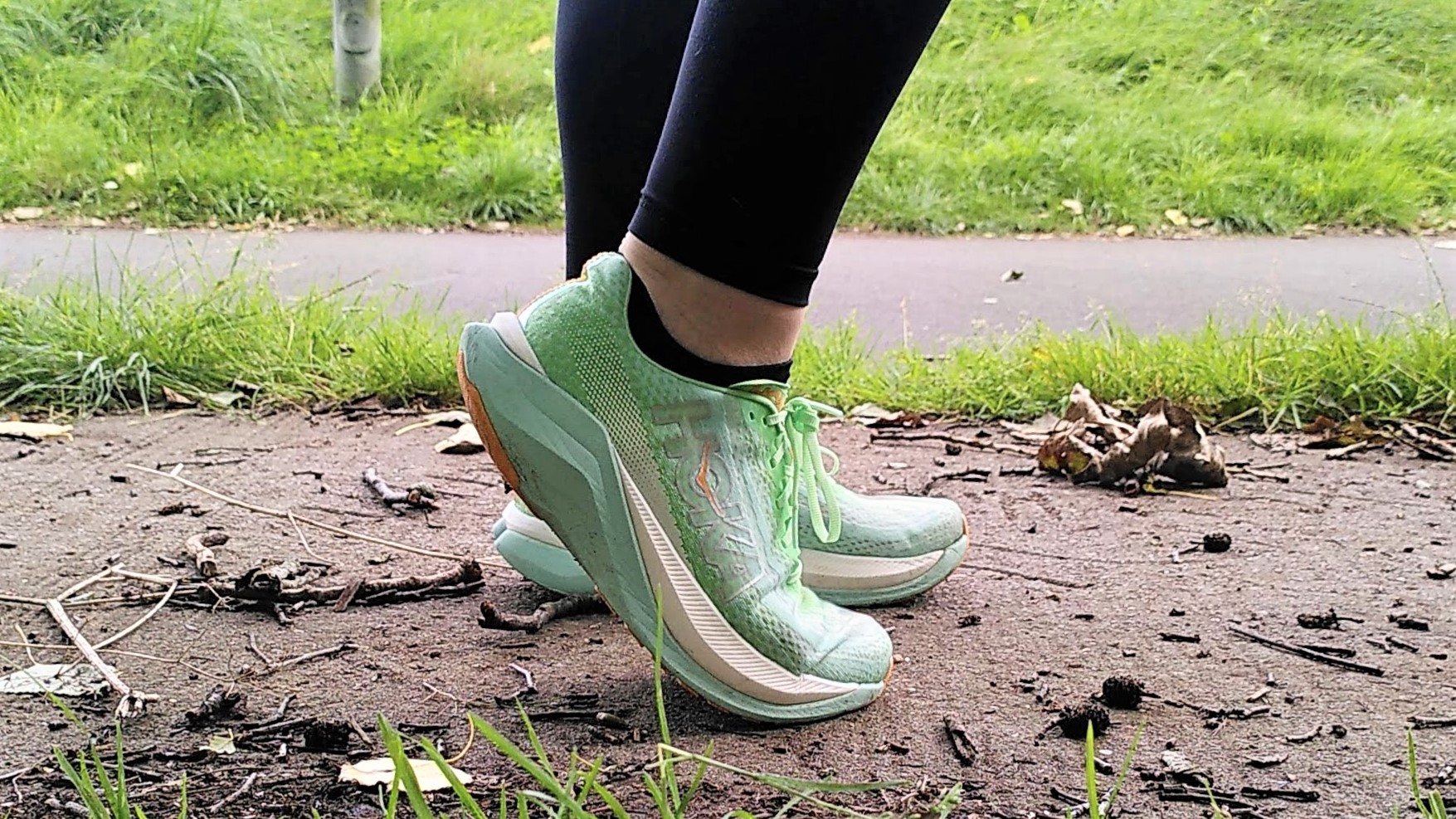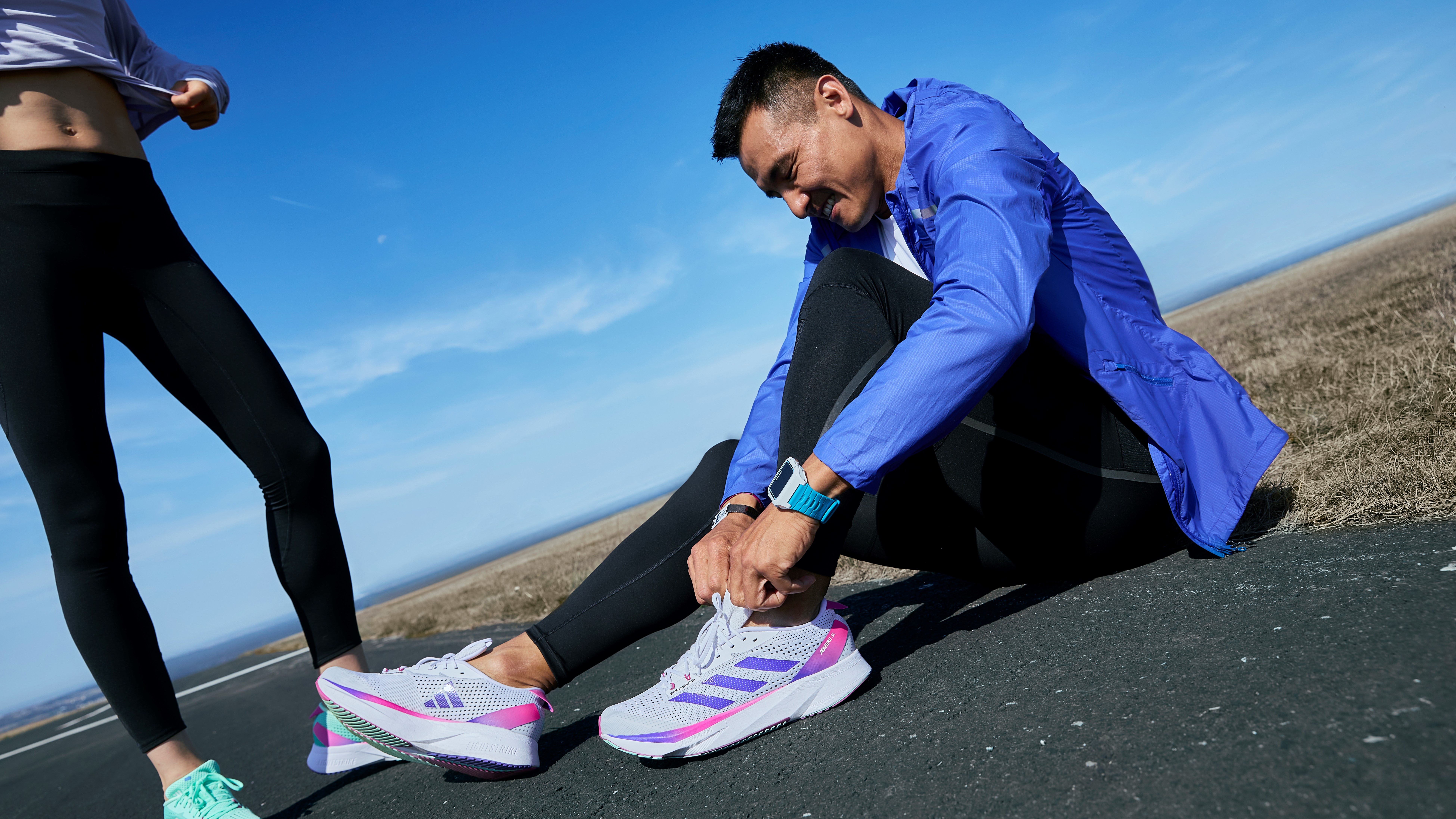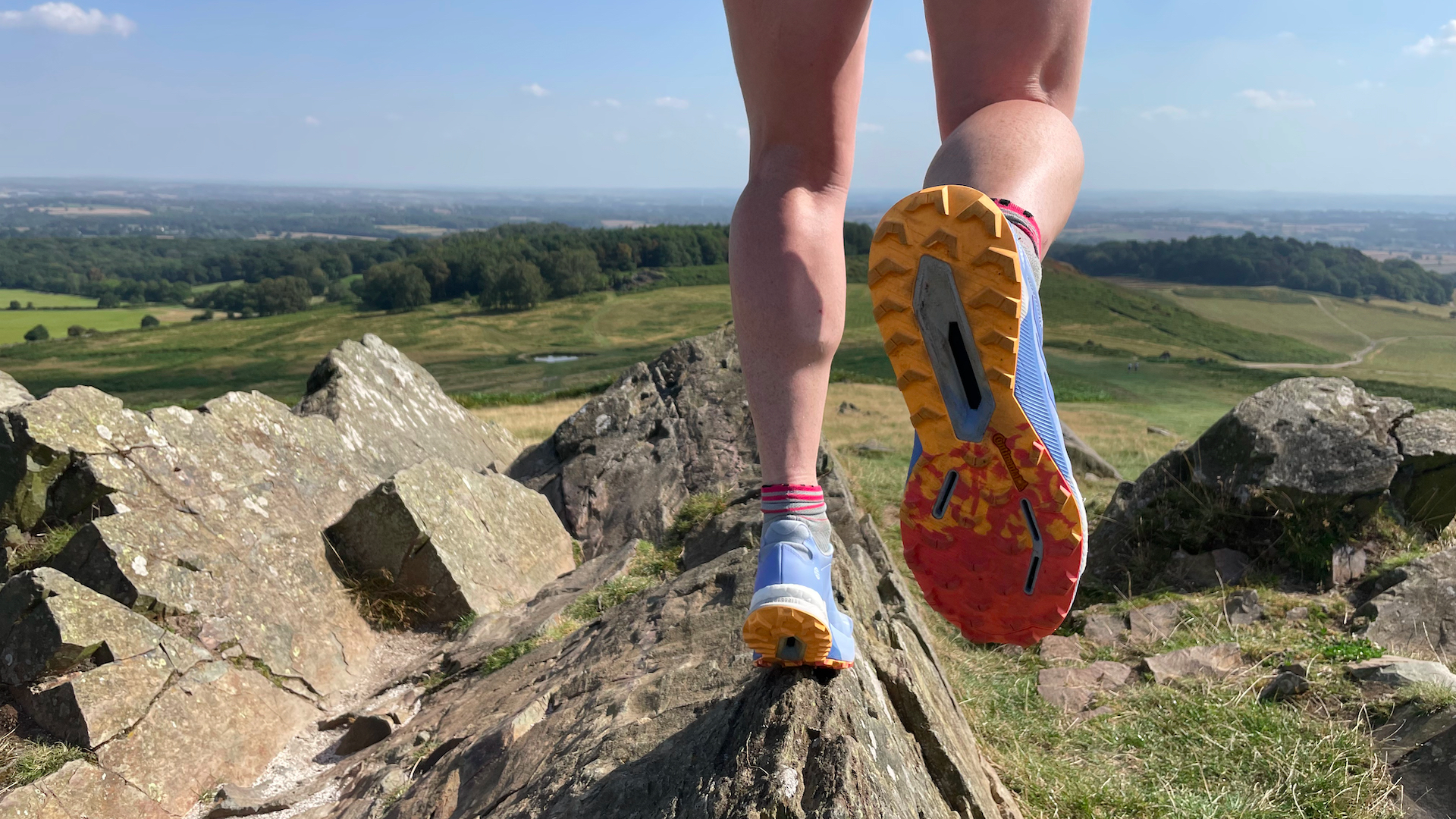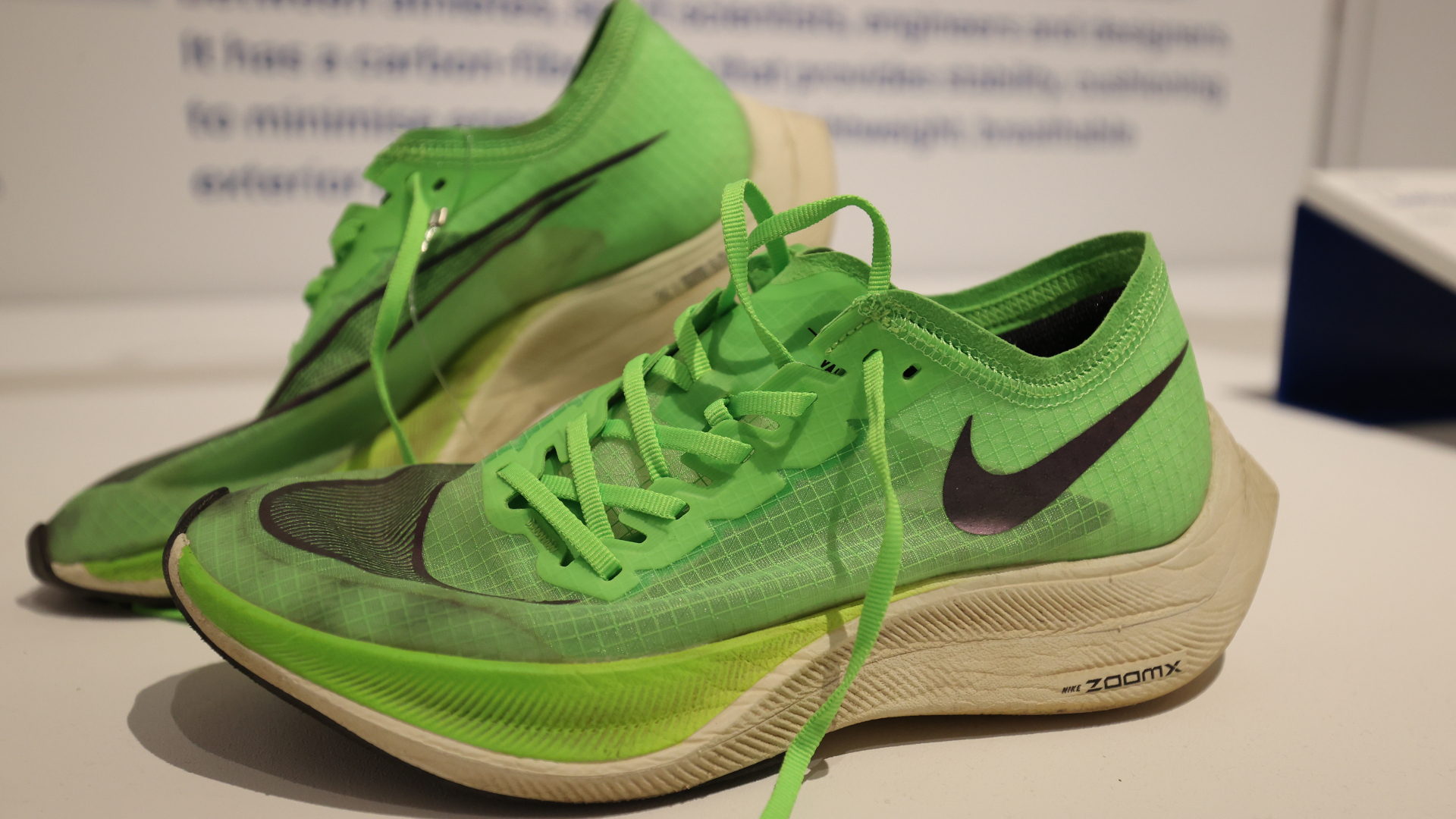
If you’ve bought a new pair of running shoes in the last 10 years, there’s a decent chance that they came with a big promise: all that bouncy EVA foam, the rocker design and perhaps even a carbon plate will “propel” you forwards, making it easier than ever for you to bound down the trail or along the pavement.
I get to test a lot of different running shoes in my job at Advnture, and I’ve worn loads that fit this bill, from the ultralight North Face Summit Vectiv Sky trail running shoes built for technical terrain to my reliable Saucony Kinvara Pros which have allowed me to run on pavement pain-free after knee surgery.
Now I'm a slow runner, so I'll take all the help I can get, but even the pros are opting for shoes that promise to “propel” them forward, whether it’s the Hoka Tecton X 3 worn by Jim Walmsley, Ludovic Pommeret and Vincent Bouillard as they took victories in three of the biggest trail races of the year, or The North Face Summit Vectiv Pros on the feet of Katie Schide as she set a new women’s course record at the UTMB.
Marathon times are getting faster and faster, sure, but are these ultra-stacked, curved runners actually propelling their users down the trail? We take a look at the science and speak to an expert to see if we can find some answers.
Meet the expert
Today’s best deals
The myth
Maximalist running shoes, which are more commonly known as “super shoes,” aren’t really new anymore, nor are they particularly controversial these days. In fact, they’re everywhere, and those who wear them swear by them.
First, midsoles on running shoes started fattening up following a decline in interest in minimalist and barefoot running shoes which seemed to peak in popularity around 2010 (you can read more about that in our article on minimalist vs maximalist running shoes).
In 2017, carbon plates made their first appearance in Nike’s Vaporfly 4% shoe, which the iconic brand claimed made wearers use four percent less energy (this was confirmed in lab tests by Springer) allowing runners to go faster, or maintain the same speed for longer. In 2019, Kenyan marathon runner Eliud Kipchoge broke the two-hour marathon barrier in Vienna while wearing the carbon-plated Nike Air Zoom Alphafly NEXT shoes and soon they started showing up in the midsoles of shoes made by all different brands.
At around the same time, running shoe brands also started embracing the rocker sole which had been popularized in the late 1990s by Swiss company Masai Barefoot Technology (MBT).
Taken together, it’s claimed that this footwear technology will “propel you through gnarly terrain”, if you’re wearing the Hoka Tecton X 3, or “provide spring in the fore- and midfoot, so you can chase your fastest moment”, if you’re in the “illegally fast” Adizero Prime X 2 Strung from Adidas which sports, not one, but two carbon plates.

The evidence
I go trail running a few times a week, but I run for the love of it, not because I’m trying to set PBs, so I’m not the best person to ask about whether my shoes make me faster. There has been some research on super shoes – a 2022 study in the Journal of Sport Health Science found that energy savings in certain maximalist shoes do exist, but couldn’t specify which components played a role – but scientists haven’t yet looked at the propulsion claim. So, I decided to ask an expert.
Jose Guevara, founder of Shredded Dad andan experienced fitness instructor who also holds a chiropractic degree, says he’s all about functional fitness that translates to real-world performance gains. He tells me the claim that shoes can propel you forward mostly comes down to the rocker sole element.
“To break it down, the rocker sole's signature curve concentrates your force through a smaller striking surface compared to traditional flats,” he says, explaining that this channeled impact subtly shifts your foot strike from heel-to-toe into more of a midfoot or forefoot landing.
“While counterintuitive at first, this smoother, rockered roll actually allows your Achilles tendon and calf muscles to load up like tightly coiled springs before unleashing that explosive power back into the ground for your next push-off.”
In other words, your calf muscles don’t stretch out quite as much when your foot is landing, which means they conserve more tension for when you’re trying to push off again. This may explain why successful ultra runners like David Roche are hailing super shoes such as the Adidas Terrex Agravic Speed Ultra as the next frontier for trail running shoes.

If you’re a runner planning on entering a race in the foreseeable future, there’s no reason why you wouldn’t want to believe that a nice, new pair of running shoes could propel you forward – but does this springy geometry singlehandedly launch you into faster speeds? Not quite, says Guevara, who explains that ultimately it still comes down to your own technique, training and strength.
“Your own raw power output still matters most.”
That rocker shape, however, might still give you a key advantage on race day.
“By promoting that efficient midfoot strike, rocker soles reduce stance time and actively pull your momentum forward through each foot plant. Less braking forces to overcome means you can maintain velocity with less effort over long distances.”
That, he says, may be crucial for racking up higher mileage while minimizing fatigue and injury risk, something 2018 researchers found when they performed a small study on 25 marathon runners and found enhanced recovery among those who wore MBTs for race day.
Fact or fiction?

While we can't say beyond any reasonable doubt that running shoes can propel you forward, there are mechanics at play with new technology which might allow you to conserve energy for pushing off, and Guevara says that's enough for him to wear them at least some of the time.
“Personally, I get quite psyched unlocking that propulsion advantage on my weekend-long hauls by tossing on a pair of rocker-soled trainers."
“I'm all in on leveraging that sneaky geometry wherever I can squeeze out extra gas in the tank.”
Running shoes can’t power you down the trail without any effort on your behalf, but they might help you capitalize on your own propulsion and save energy, and it's probably true that thinking your shoes are helping you means you probably will run better or faster.
If you're sold on the idea of shoes that can propel you forward, however, Guevara warns there are some caveats.
“Rockered rides shine most for high-mileage efforts on rhythm runs where efficiency reigns supreme over raw speed. But for faster threshold training or high cadence intervals, you may want to stick with lighter flats or racers that allow more proprioceptive ground feel and quicker turnover.”
Furthermore, he recommends easing into running in rocker soles gradually if you're used to maximal cushioning. Start with just a few easy miles before ramping up duration or intensity to give the soft tissue structures of your feet and legs time to adapt.







